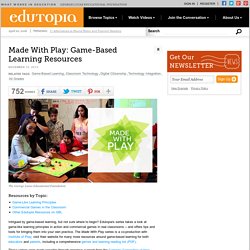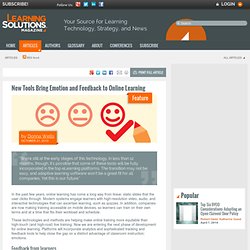

ADDIE Cheat Sheet. When first starting out in elearning design and development, it can be easy to get lost in all of the theory and best practices.

It doesn’t take long to realize that every development system is littered with both positives and negatives. So which one should you use? Nine times out of ten, I recommend going with ADDIE. If you aren’t familiar, ADDIE stands for Analyze-Design-Develop-Implement-Evaluate. For years it has been the de facto model for most elearning course development. This doesn’t mean that ADDIE is without flaws. Trouble is, the ADDIE model has been written about to-death. Analyze (10% of budget) Make the Most of SME Interview Time! by Michele Medved. “By using these tips to plan, conduct, and follow up on your meeting you can achieve your project goal in a timely and effective manner.”

Your time with subject matter experts (SMEs) is limited because of their own responsibilities and deadlines. It is important to maximize your time with them so that you get the answers you need, while remaining respectful of their limited time. In this article, I offer ideas I have found useful for planning and doing effective interviews with SMEs. It’s all about preparation Any meeting or discussion with an SME requires planning to make sure you ask the right questions, that your SME considers your questions, and that your SME provides you with the right answers.
Remember, you may need to ask more than one SME to get perspective on a topic. Execution. Helping Game Developers Tackle the Toughest Game (EdSurge News) — www.edsurge.com. There are many challenges: Many teachers and parents have traditionally viewed games as providing largely entertainment--not education--value.

The existing research for their learning value has been shoddy. Publishing and distribution channels--particularly in the K-12 market--are difficult to navigate. And there’s the cold possibility that educational games may simply not be as fun as mainstream titles. Gamification Roadmap [INFOGRAPHIC] Using some form of gamification in learning today is becoming very popular.
![Gamification Roadmap [INFOGRAPHIC]](http://cdn.pearltrees.com/s/pic/th/gamification-infographic-77187335)
That said, the real benefit of gamification is only realized when the program is implemented properly. Depending on the scope of the project, the way to go about setting up the program could vary. In general, I think it is a good idea to start with something simple, and then expand from there. Sure, there are very elaborate gamification programs for learning out there, but in many cases it took a lot of time to build them up. You need to first create the culture of gamification so that there is active participation, then investigate how to expand it. If you have ever wondered how to start a program, it can sometimes be difficult to come across some good information. Gamification, Game-based Learning, Serious Games: Any Difference? by Kapil Bhasin. “The success of games in the general marketplace has redefined expectations in the learning sphere, bringing with it a paradigm shift in design.

I hope that the best practices that I’ve explored here provide a helpful framework to kick-start your approach to the gamification of organizational learning.” Given the combination of external market forces and impetus within the instructional design community, sooner or later, every learning-and-development or training department will come to a decision point on gamification. As always with new trends, there are discussions and disagreements regarding the details. Game-Based Learning: Resource Roundup. Made With Play: Game-Based Learning Resources. Resources by Topic: Intrigued by game-based learning, but not sure where to begin?

Edutopia's series takes a look at game-like learning principles in action and commercial games in real classrooms -- and offers tips and tools for bringing them into your own practice. The Made With Play series is a co-production with Institute of Play; visit their website for many more resources around game-based learning for both educators and parents, including a comprehensive games and learning reading list (PDF). These videos were made possible through generous support from the Carnegie Corporation of New York, the Bill and Melinda Gates Foundation, and the John D. and Catherine T. MacArthur Foundation. Leo Performance Assurance Solution by Marc J. Rosenberg. “There are many compelling reasons to use performance support in the learning arena, where the demand for greater efficiency and better performance is increasing, and in almost every front-line operation, where higher productivity, fewer errors, reduced costs, and improved customer satisfaction are driving today’s successful businesses.

Leo represents a new and proven way to go—beyond just helping people learn how to do the work, but to actually getting the work done.” Performance support is in the midst of its second revival. The first, back in the 1990s, introduced us all to the idea that you could help people learn quicker, and do their jobs significantly better and faster, by integrating specially designed tools directly into work applications. Making Video More Social by Jane Bozarth.
“Next time you’re working with deploying video online, step back and look for ways to help learners engage with it—and with each other—rather than only consume it.”

Since the first filmstrip projector made its way into the first classroom, standup trainers have been incorporating video into formal instruction. In my experience, most actually do this pretty well: I’ve seen good use throughout my career of relevant video clips, points for discussion, and some conversation about what and why and comparison to that. Video often made for good conversation and could reach the affective domain when other approaches did not. But when we moved to eLearning we left a lot of that behind—the video clips were part of the eLearning content, but the rest of that experience, the talking and processing, didn’t make the transition. Set the stage Prime the pump by helping learners understand why they’re watching this video, now. Change Conversations with Training Clients: Do—Know—Access by Mark Teachout & Mike Dickinson. “We have found the simplicity of the Do—Know—Access triangle has a double benefit.

First, it focuses on important distinctions that become almost immediately intuitive for the client. We have seen the client’s tendency to focus on a laundry list of topics evaporate. Meet-sam - Allen Interactions. New Tools Bring Emotion and Feedback to Online Learning by Donna Wells. “We’re still at the early stages of this technology.

In less than 12 months, though, it’s possible that some of these tools will be fully incorporated in the top eLearning platforms. The transition may not be easy, and adaptive learning software won’t be a great fit for all companies. Yet this is our future.” In the past few years, online learning has come a long way from linear, static slides that the user clicks through. SBLearnTech - SBLearnTech - Home. eLearning Mind - Enhancing Instructional Design with Illustrations. The benefit of using illustrations for instructional design can be forgotten.
Photographs are praised because they are more “human” (and the content is intended for humans). I don’t disagree. Photographs are an excellent way to emphasize the human element to the content you’re developing especially with technical or “dry” content. Crooked Lines by Jane Bozarth. “Learning—and life—rarely happens in a neat straight path. When designing courses, look for ways to break out of the linear. Look into approaches more interesting and useful for your learners.” In last month’s column we looked at ideas for effective treatments for online learning experiences: stories or narrative wrappers that can help make even dull content more interesting and engaging—and memorable. Let’s look at another critical element of good eLearning design. AGILE Instructional Design: Do You Have What It Takes? (Part 1 of 3) by Jennifer Neibert. “Those of you responsible for creating software training are likely already familiar with the agility required to meet project demands.
For those of you not as familiar with that world, we’ll look closely at AGILE instructional design to determine if it is a process that gives us a greater ability to respond to our changing environments and needs—and keep up with today’s rapid pace of change.” The only constant is change. It’s a philosophical quote that rings true for many of us. And, for many of us, the speed of change is only getting faster and faster. As eLearning professionals, how can we possibly keep up with the rapid pace of change and continue to design, develop, and deliver effective learning solutions? The Gamification of mLearning (Part 3 of 3) by Karl Kapp. “A mobile gamification platform allows the learner to access the content from anywhere and provides a portable gamification experience that learner’s access when convenient. The combination of mobile and gamification is helping to educate sales professionals without pulling them from the all-important job of selling.”
Cricket Communications is the seventh-largest wireless-communications provider in the United States. Founded in 1999 to make wireless phone service more affordable to more people, Cricket offers economical, pre-paid, unlimited voice-and-data-rate plans that do not require a contract. Brands that failed with gamification. Monsters are very powerful. You need awesome weapons to kill them. This is why game mechanics are such an integral part of games. They measure and show your progress toward getting awesome weapons so you can blast monsters to bits. Gaming is huge -- a $60 billion industry. Yet, 84 percent of marketers had no plans to include games in their marketing efforts in 2011. Marketers want weapons too.
And so a buzzword is born: gamification. Get in GEAR with Launch of AGILE Instructional Design Course by Jennifer Neibert. OOPS! Don’t Make This Training Development Mistake! How To Use Videos In Online Courses - the vzaar blog. You’ve got it. ADDIE Model Explained [INFOGRAPHIC] Anyone who is actively involved with instructional design has at some point used the ADDIE model (Analyze, Design, Develop, Implement, and Evaluate) for their course development. This model is one of (if not the) most popular structures used by training designers today. OOPS! Don’t Make This Training Development Mistake! The Registry of Simulations and Serious Games. When do you need a branching scenario? The Millennials Are Coming! Proven Engagement Strategies by Elisabeth Arellano. When developing training for Millennials, don’t lose sight of the basics and get too carried away with gimmicks. Establish your business goals and work backward to achieve them with training activities.
Most of us have heard the term “Millennials” and recognize that change will inevitably come, just as it always does, but we often don’t completely understand what specifically the “Millennial” shift may mean. We hear, for example, that Millennials have a different learning style, a different level of comfort with technology, a different culture, and a different way of relating to their workplace. As this new generation enters the workforce, training organizations need to evaluate how they are going to motivate, engage, and inspire these learners to achieve results in their new positions. We have interviewed Nate Chai, senior director of Design Consulting at Allen Communication, to tell us what he has learned about capturing the attention of incoming Millennials. What are the main concerns? The Millennials Are Coming! Proven Engagement Strategies by Elisabeth Arellano.
Gamification Strategies for Developing Air Force Officers by Fil J. Arenas & Andrew G. Stricker. “Overall, offering learning activities in 3-D immersive learning environments (ILEs) provides the military learner with valuable experience to process information into knowledge, then share that knowledge and act on it to solve challenges to develop agile and adaptive leaders with the skills necessary for the profession of arms in the 21st century.” Developing a high degree of problem-solving skill appropriate to each career stage is an important function of military training from the recruit level onward. The ultimate goal of this training is agile, adaptive military professionals, particularly the leaders. Coming to Grips with Reality: Multiple Learning Modes by Sharon Fulton Bevers.
Once Upon a Keyboard: Designing Stories Into E-Learning by Karen Scott. How to Engage Learners with Scenario-based Learning by Hans Kövi & Kasper Spiro. The Story Arc Model: Combining Simulation and Story to Create Memorable Learning by Jack McGrath. What's in a Story? More Than You Can Tell by Diane Senffner. Instructional Design Roles and Responsibilities. Is it necessary for an Instructional Designer to be a Subject Matter Expert? Blog: Tips for Writing Instructional and Training Material. Why Games Don't Teach by Ruth Clark. Research for Practitioners: How Expert Designers Design by Angela van Barneveld. Supporting Critical Thinking in eLearning by Bill Brandon. Leveraging Words and Visuals in Training. ***Instructional Design*** » 8/60 » McDonald Sales and Marketing, LLC.
***Instructional Design*** » 3/60 » McDonald Sales and Marketing, LLC. Designing Learning for “When Things Change” by Michele Medved. One-to-one (task) training. Is Content Curation in Your Skill Set? It Should Be. by David Kelly. The Ten Commandments of eLearning. Extending Instructional System Design. Instructional System Design. Instructional System Design Concept Map. eLearning. Creating Rapid E-learning Branching Scenarios. The Thinking Behind a Branching Scenario. Instructional design for scenarios: sample and useful tool. Tip 10: The scope's the thing. The Colors of eLearning. 5 Important Analysis Questions. Ten Online Training Do's and Dont's. Negotiating Out “Nice-to-Know” Information. Best Practices for Creating Online Courses. Designing eLearning with a Grid. Designing mLearning UIs with Blueprint by Mayra Aixa Villar.
Instructional Design Tips. E-learning development and outsourcing company in USA. E-Learning Project Management. E-learning: How to deliver an engaging Virtual Classroom presentation. Learning Transfer: 10 Components that Guarantee Learning will Transfer. Visual Instructional Design. LearningAge Solutions - Training - Free Online. The Big Mistake in Elearning. Infographies. Research for Practitioners: Nine Ways to Reduce Cognitive Load by Angela van Barneveld. Best of DevLearn: The Elements of Interactive eLearning : Online Events Archive. Make Your LMS Learner-Driven by Jason Clymer.
Www.thelearningmanager.com/pubdownloads/developing_clear_learning_outcomes_and_objectives.pdf. Instructional System Design (ISD) Handbook (ADDIE) Estimating Costs and Time in Instructional Design. Career change - Instructional Design to eLearning. Marc My Words: Why I Hate Instructional Objectives by Marc J. Rosenberg. Why I LOVE Instructional Objectives by Allison Rossett. Building eLearning for the Net Generation: Seven Tips by Phil Cowcill. #LearningStyles 'Awareness' Day: Collected Resources. Adapting elearning programs cross-culturally. Understanding Learning Styles Research.
Elearning Engagement Techniques. 5 Tips to Make eLearning Enjoyable. Are You Meeting All Five Moments of Learning Need? by Conrad Gottfredson & Bob Mosher. “We're Lost, But We're Making Good Time”: Performance Support to the Rescue by Conrad Gottfredson & Bob Mosher. Learning Designers - Learn, Connect and Share. [INFOGRAPHIC] The ADDIE Model: A Visual Representation. 15+ eLearning Storyboard Templates. E-Learning Uncovered. How to Evaluate Instruction, Including eLearning by Stan Bunson. Transforming Your Instructional Design Team by Dick Handshaw. Just One Question: Brenda Enders on Gamification by Bill Brandon.
Learning Designers - Learn, Connect and Share. Beginning Instructional Authoring: Getting the Content You Need from SMEs, Part 1 by Patti Shank. The Design Document: Your Blueprint for e-Learning Standards and Consistency by Monique Donahue. Well Read: A Theory of Fun for Game Design by Judy Unrein.